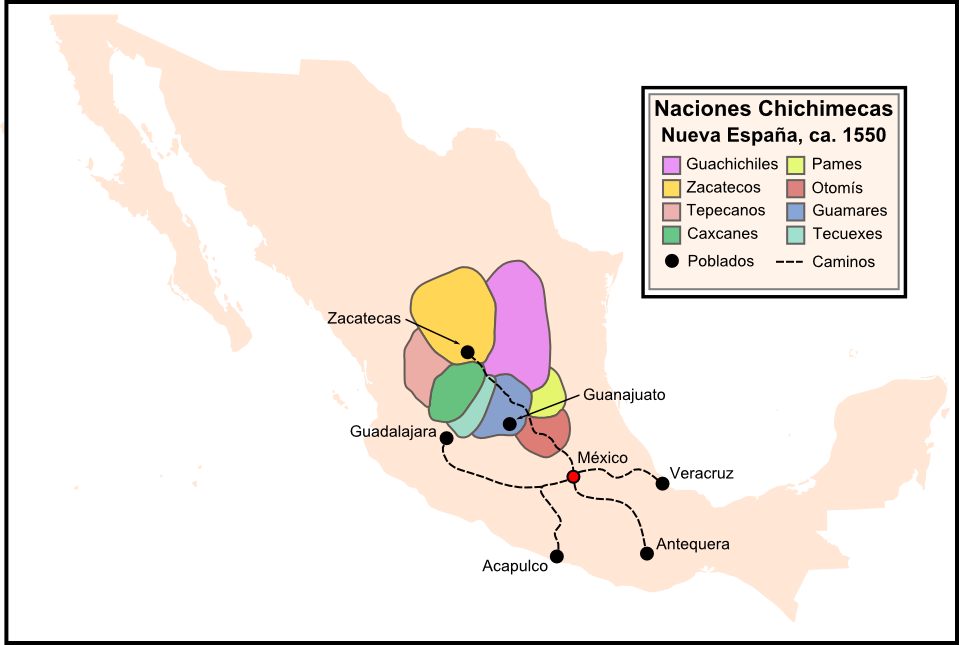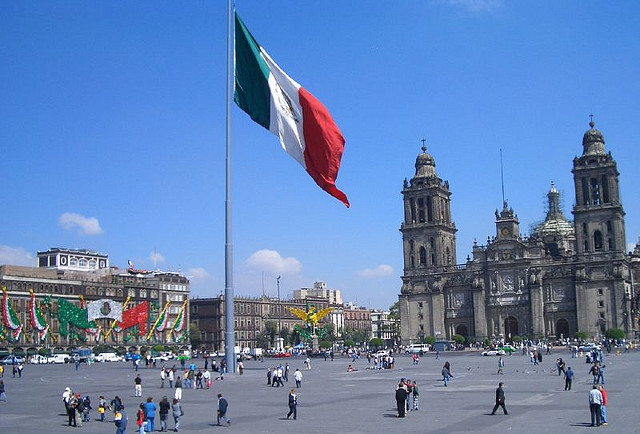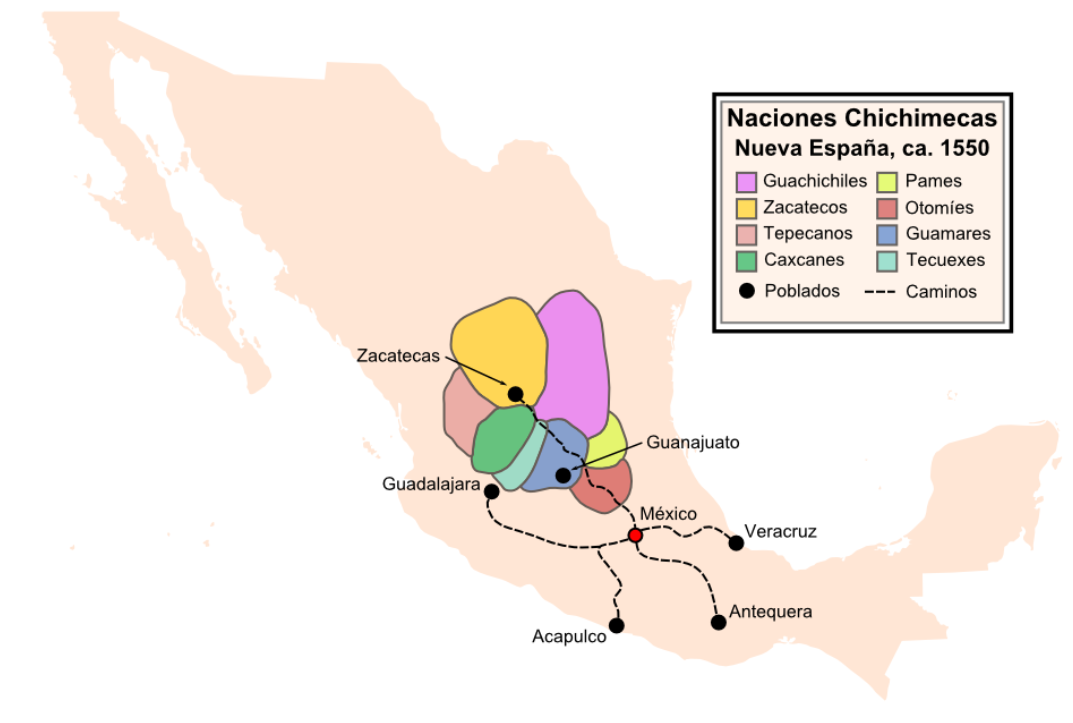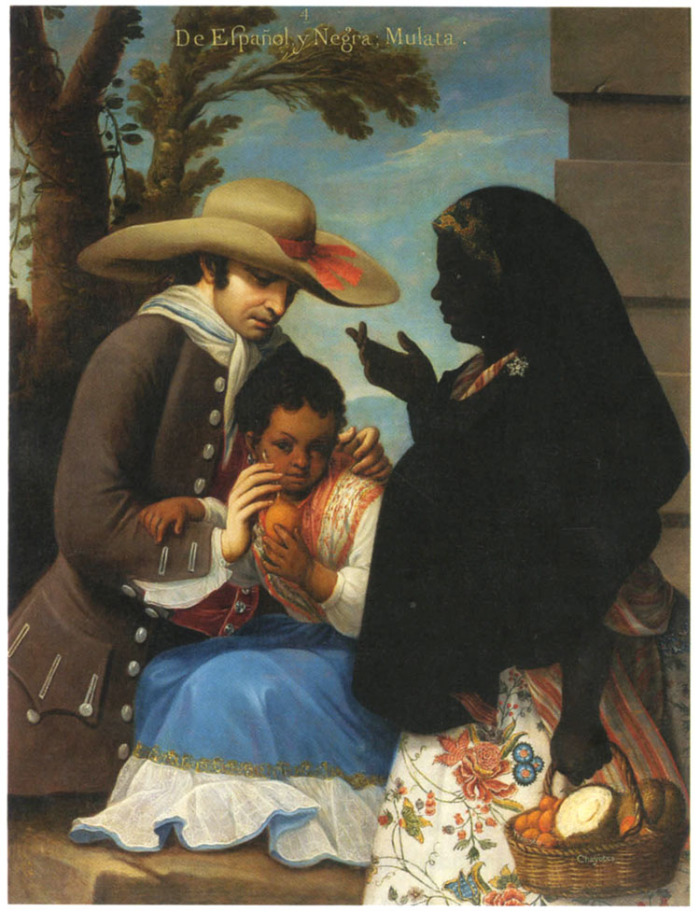|
Apaseo El Grande
Apaseo el Grande is a city and municipality located in Guanajuato, Mexico. The municipality covers 415.26 square kilometres (160 sq mi). It is bordered on the north by Comonfort and San Miguel de Allende, on the east by Querétaro, on the south by Apaseo el Alto, and on the west by Celaya. The municipality had a population of 85,319 inhabitants according to the 2010 census. In pre-Columbian times, the region was known as Andahe ("Close to the water") and Atlayahualco ("Place where water flows") by the Otomí and Nahua inhabitants. It was eventually known as Apatzeo ("Yellow flower") by the Purépecha. Following the Spanish conquest 1525, Apaseo was the first town founded in what is now the state of Guanajuato. It received its present name of Apaseo el Grande in 1957, to avoid confusion with the neighboring town of Apaseo el Alto. Etymology The initial name of the town and municipality was Apatzeo, first used by Hernán Pérez de Bocanegra y Córdoba, who was appa ... [...More Info...] [...Related Items...] OR: [Wikipedia] [Google] [Baidu] |
List Of Sovereign States
The following is a list providing an overview of sovereign states around the world with information on their status and recognition of their sovereignty. The 206 listed states can be divided into three categories based on membership within the United Nations System: 193 UN member states, 2 UN General Assembly non-member observer states, and 11 other states. The ''sovereignty dispute'' column indicates states having undisputed sovereignty (188 states, of which there are 187 UN member states and 1 UN General Assembly non-member observer state), states having disputed sovereignty (16 states, of which there are 6 UN member states, 1 UN General Assembly non-member observer state, and 9 de facto states), and states having a special political status (2 states, both in free association with New Zealand). Compiling a list such as this can be a complicated and controversial process, as there is no definition that is binding on all the members of the community of nations concerni ... [...More Info...] [...Related Items...] OR: [Wikipedia] [Google] [Baidu] |
Antonio De Mendoza
Antonio de Mendoza y Pacheco (, ; 1495 – 21 July 1552) was a Spanish colonial administrator who was the first Viceroy of New Spain, serving from 14 November 1535 to 25 November 1550, and the third Viceroy of Peru, from 23 September 1551, until his death on 21 July 1552. Mendoza was born at Alcalá la Real ( Jaén, Spain), the son of the 2nd Count of Tendilla, Íñigo López de Mendoza y Quiñones, and Francisca Pacheco. He was married to María Ana de Trujillo de Mendoza. Viceroy of New Spain Mendoza became Viceroy of New Spain in 1535 and governed for 15 years, longer than any subsequent viceroy. On his arrival in New Spain, he found a recently conquered territory beset with Indigenous unrest and rivalry among the Spanish conquerors and Spanish settlers. His difficult assignment was to govern in the king's name without making an enemy of Hernán Cortés. Cortés himself had expected to be made the permanent ruling crown official of New Spain, since he had led the Span ... [...More Info...] [...Related Items...] OR: [Wikipedia] [Google] [Baidu] |
El Camino Real De Tierra Adentro
The Camino Real de Tierra Adentro ( en, Royal Road of the Interior Land), also known as the Silver Route, was a Spanish road between Mexico City and San Juan Pueblo (''Ohkay Owingeh''), New Mexico, USA, that was used from 1598 to 1882. It was the northernmost of the four major "royal roads" that linked Mexico City to its major tributaries during and after the Spanish colonial era. In 2010, 55 sites and five existing UNESCO World Heritage Sites along the Mexican section of the route were collectively added to the World Heritage List, including historic cities, towns, bridges, haciendas and other monuments along the route between the Historic Center of Mexico City (an independent World Heritage Site) and the town of Valle de Allende, Chihuahua. The section of the route within the United States was proclaimed the El Camino Real de Tierra Adentro National Historic Trail, a part of the National Historic Trail system, on October 13, 2000. The historic route is overseen by both t ... [...More Info...] [...Related Items...] OR: [Wikipedia] [Google] [Baidu] |
Chichimeca War
The Chichimeca War (1550–90) was a military conflict between the Spanish Empire and the Chichimeca Confederation established in the territories today known as the Central Mexican Plateau, called by the Conquistadores La Gran Chichimeca. The epicenter of the hostilities was the region now called the Bajío. The Chichimeca War is recorded as the longest and most expensive military campaign confronting the Spanish Empire and indigenous people in Mesoamerica. The forty-year conflict was settled through several peace treaties driven by the Spaniards which led to the pacification and, ultimately, the streamlined integration of the native populations into the New Spain society. The Chichimeca War (1550-1590) began eight years after the two-year Mixtón War. It can be considered a continuation of the rebellion as the fighting did not come to a halt in the intervening years. Unlike in the Mixtón rebellion, the Caxcanes were now allied with the Spanish. The war was fought in what are ... [...More Info...] [...Related Items...] OR: [Wikipedia] [Google] [Baidu] |
Chichimeca
Chichimeca () is the name that the Nahua peoples of Mexico generically applied to nomadic and semi-nomadic peoples who were established in present-day Bajio region of Mexico. Chichimeca carried the meaning as the Roman term "barbarian" that described Germanic tribes. The name, with its pejorative sense, was adopted by the Spanish Empire. For the Spanish, in the words of scholar Charlotte M. Gradie, "the Chichimecas were a wild, nomadic people who lived north of the Valley of Mexico. They had no fixed dwelling places, lived by hunting, wore little clothes and fiercely resisted foreign intrusion into their territory, which happened to contain silver mines the Spanish wished to exploit." In spite of not having temples or idols, they practiced animal sacrifice, and they were feared for their expertise and brutality in war. The Spanish invasion resulted in a "drastic population decline of all the peoples known collectively as Chichimecas, and to the eventual disappearance as peoples ... [...More Info...] [...Related Items...] OR: [Wikipedia] [Google] [Baidu] |
Chichimeca Nations - Esp
Chichimeca () is the name that the Nahua peoples of Mexico generically applied to nomadic and semi-nomadic peoples who were established in present-day Bajio region of Mexico. Chichimeca carried the meaning as the Roman term "barbarian" that described Germanic tribes. The name, with its pejorative sense, was adopted by the Spanish Empire. For the Spanish, in the words of scholar Charlotte M. Gradie, "the Chichimecas were a wild, nomadic people who lived north of the Valley of Mexico. They had no fixed dwelling places, lived by hunting, wore little clothes and fiercely resisted foreign intrusion into their territory, which happened to contain silver mines the Spanish wished to exploit." In spite of not having temples or idols, they practiced animal sacrifice, and they were feared for their expertise and brutality in war. The Spanish invasion resulted in a "drastic population decline of all the peoples known collectively as Chichimecas, and to the eventual disappearance as peoples ... [...More Info...] [...Related Items...] OR: [Wikipedia] [Google] [Baidu] |
Mulattos
(, ) is a racial classification to refer to people of mixed African and European ancestry. Its use is considered outdated and offensive in several languages, including English and Dutch, whereas in languages such as Spanish and Portuguese is not, and can even be a source of pride. A () is a female ''mulatto''. Etymology The English term and spelling ''mulatto'' is derived from the Spanish and Portuguese . It was a common term in the Southeastern United States during the era of slavery. Some sources suggest that it may derive from the Portuguese word (from the Latin ), meaning ' mule', the hybrid offspring of a horse and a donkey. The Real Academia Española traces its origin to in the sense of hybridity; originally used to refer to any mixed race person. The term is now generally considered outdated and offensive in non-Spanish and non-Portuguese speaking countries, and was considered offensive even in the 19th century. Jack D. Forbes suggests it originated in the Arabic ... [...More Info...] [...Related Items...] OR: [Wikipedia] [Google] [Baidu] |
Bajío
El Bajío (the ''lowland'') is a cultural and geographical region within the central Mexican plateau which roughly spans from north-west of the Mexico City metropolitan area to the main silver mines in the northern-central part of the country. This includes (from south to north) the states of Querétaro, Guanajuato, parts of Jalisco (Centro, Los Altos de Jalisco), Aguascalientes and parts of Zacatecas, San Luis Potosí and Michoacán. Located at the border between Mesoamerica and Aridoamerica, El Bajío saw relatively few permanent settlements and big civilizations during Pre-Columbian history, being mostly inhabited by nomadic tribes known to the Aztecs as " The Chichimeca" peoples (''the barbarians''), another Nahua group from whom the Toltec and the Aztecs were probably descended. The tribes that inhabited El Bajío proved to be some of the hardest to conquer for the Spanish, but due to its strategic location in the Silver route, it also drew prominent attention from the Span ... [...More Info...] [...Related Items...] OR: [Wikipedia] [Google] [Baidu] |
Primogeniture
Primogeniture ( ) is the right, by law or custom, of the firstborn legitimate child to inherit the parent's entire or main estate in preference to shared inheritance among all or some children, any illegitimate child or any collateral relative. In most contexts, it means the inheritance of the firstborn son (agnatic primogeniture); it can also mean by the firstborn daughter (matrilineal primogeniture). Description The common definition given is also known as male-line primogeniture, the classical form popular in European jurisdictions among others until into the 20th century. In the absence of male-line offspring, variations were expounded to entitle a daughter or a brother or, in the absence of either, to another collateral relative, in a specified order (e.g. male-preference primogeniture, Salic primogeniture, semi-Salic primogeniture). Variations have tempered the traditional, sole-beneficiary, right (such as French appanage) or, in the West since World War II, eliminate ... [...More Info...] [...Related Items...] OR: [Wikipedia] [Google] [Baidu] |
Fee Tail
In English common law, fee tail or entail is a form of trust established by deed or settlement which restricts the sale or inheritance of an estate in real property and prevents the property from being sold, devised by will, or otherwise alienated by the tenant-in-possession, and instead causes it to pass automatically by operation of law to an heir determined by the settlement deed. The term ''fee tail'' is from Medieval Latin , which means "cut(-short) fee" and is in contrast to "fee simple" where no such restriction exists and where the possessor has an absolute title (although subject to the allodial title of the monarch) in the property which he can bequeath or otherwise dispose of as he wishes. Equivalent legal concepts exist or formerly existed in many other European countries and elsewhere. Purpose The fee tail allowed a patriarch to perpetuate his blood-line, family-name, honour and armorials in the persons of a series of powerful and wealthy male descendants. By kee ... [...More Info...] [...Related Items...] OR: [Wikipedia] [Google] [Baidu] |
Nuño De Guzmán
Nuño Beltrán de Guzmán (c. 14901558) was a Spanish conquistador and colonial administrator in New Spain. He was the governor of the province of Pánuco from 1525 to 1533 and of Nueva Galicia from 1529 to 1534, and president of the first Royal Audiencia of Mexico – the high court that governed New Spain – from 1528 to 1530. He founded several cities in Northwestern Mexico, including Guadalajara. Originally a bodyguard of Charles I of Spain, he was sent to Mexico to counterbalance the influence of the leader of the Spanish conquest of the Aztec Empire, Hernán Cortés, since the King worried he was becoming too powerful. As Governor of Pánuco, Guzmán cracked down hard on the supporters of Cortés, stripping him and his supporters of property and rights. He conducted numerous expeditions of conquest into the northwestern areas of Mexico, enslaving thousands of Indians and shipping them to the Caribbean colonies. In the resulting power struggles where he also made himself a ... [...More Info...] [...Related Items...] OR: [Wikipedia] [Google] [Baidu] |




